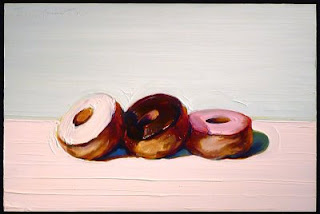ART IS AWESOME!! Week 6
JIM DINE
tate.org.uk
Welcome back to week 6 of Art is Awesome!
This week we are learning about artist Jim Dine.
Jim Dine is a very versatile artist. He has produced over three thousand paintings, sculptures, drawings, and prints! He is well known for repeating images over and over in his art, showing them in different ways. Things like hands, tools, hearts, and
even bathrobes!
artsy.net
When he was a child, his family owned a hardware store so he was
surrounded with tools. He was fascinated with them and studied
their shapes and forms.
His work is part of the Pop Art movement.
You can see more of his work at www.artnet.com.
pinterest.com
ms chang's art classes
For your assignment this week you will need the following materials:
drawing paper
crayons, chalks, markers or whatever you would like
Assignment:
Fold the paper into sections, such as fourths
Draw a heart, or paintbrush, or tool, or whatever you want in each section filling the whole section
Color and decorate each heart or item with a different design. Color in the background for each item also.
Optional: Tape or glue your drawing onto a larger piece of colored paper to make a simple mat or frame.
Here is a drawing done by one of our team members, Miles, age 10.
Miles, age 10
Look around your room for an object that you would like to draw.
Have fun with this assignment! We'd love you to send us a picture
of your drawing!
Bonus Points for Parents:
When children participate in both arts and crafts, creativity and imagination receive strong stimulation, states the Americans for the Arts website. A child with a paintbrush in his hand suddenly has the ability to create vivid paintings and express himself boldly with color and brush strokes. The youngster can also learn about symbolic communication through the art he creates, choosing various colors to communicate feelings, for example. livestrong.com
PLEASE FEEL FREE TO SHARE
youngatartjourney.blogspot.com youngatart2015@gmail.com facebook.com/youngatart2015 etsy.com/shops/weareyoungatart young-at-art.com





































